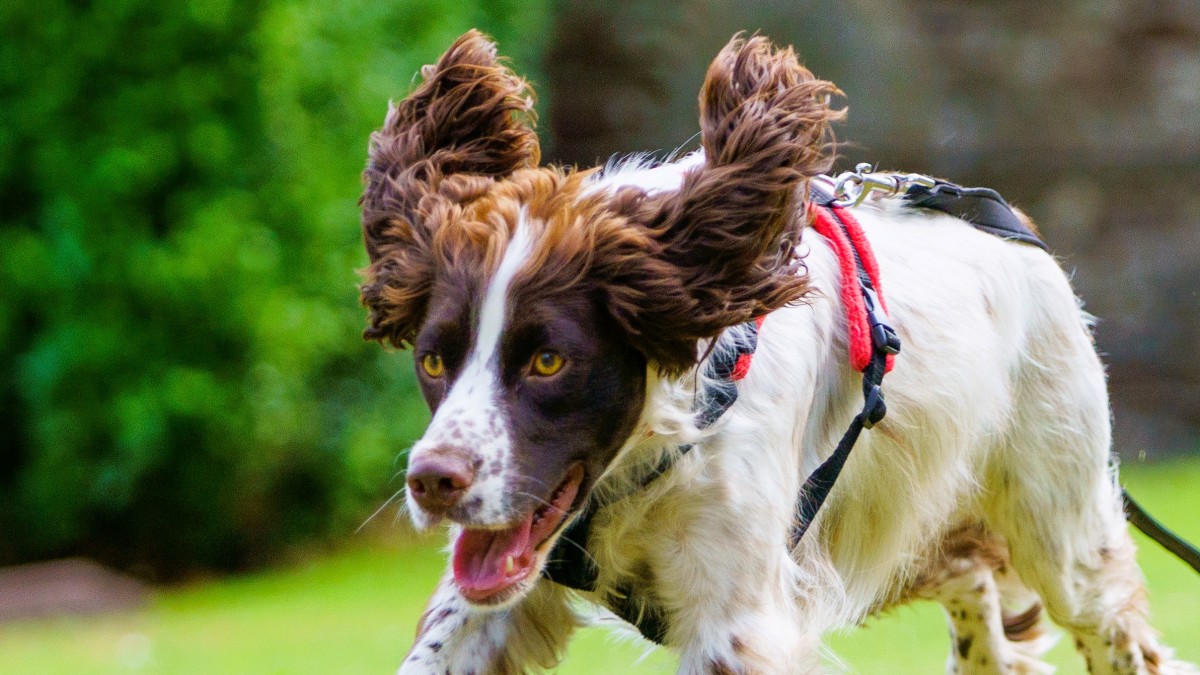Navigating the Challenges of Training Adolescent Gundog Breeds

Training adolescent gundog breeds can be challenging, but with patience and consistency, you can guide them through this phase.
Navigating the Challenges of Training Adolescent Gundog Breeds
Training a gundog breed can be incredibly rewarding, but when your dog enters adolescence, the task often becomes more complex. Just like human teenagers, adolescent dogs experience hormonal changes, increased independence, and sometimes push boundaries. For gundog breeds, this period can be particularly challenging due to their high energy, strong instincts, and drive. However, with patience, consistency, and the right approach, you can successfully navigate this stage and continue to shape a well-behaved, skilled companion.
Understanding the Adolescent Stage
Adolescence in dogs typically starts around 6-8 months and can last until they are 18-24 months, depending on the breed. During this time, you may notice behavioural changes like:
- Increased independence: Your once attentive puppy might become more independent or start ignoring cues they previously knew.
- Excess energy: High-energy gundog breeds like Labradors and Spaniels often become even more hyperactive during adolescence, needing extra physical and mental outlets.
- Testing boundaries: Adolescents tend to push limits, making them seem less obedient and more defiant.
While this phase can be frustrating, it’s also a critical period for solidifying training and establishing a strong bond with your dog.
Key Strategies for Training Adolescent Gundogs
- Stay Consistent with Cues
Consistency is essential when working with an adolescent gundog. They may start to "forget" commands or choose to ignore you, but it’s crucial not to let this slide. Reinforce obedience training by practicing basic commands like "sit," "stay," "come," and "heel" regularly. Be patient, and avoid getting frustrated—adolescence is a temporary stage. work with the dog you have in that moment, set them up for success.
- Channel Their Energy Appropriately
Adolescent gundog breeds have a lot of energy, and without proper outlets, they may develop unwanted behaviours like chewing, jumping, or excessive barking. Incorporate plenty of physical activities like retrieving, scent work, and controlled off-lead exercise. Structured activities such as retrieving dummies or working on recall can help tire them out and channel that energy into something productive.
- Focus on Mental Stimulation
Physical exercise alone isn’t enough for adolescent gundogs. These breeds need mental stimulation to stay balanced and happy. Gundog training exercises, such as advanced scent work, casting (directing your dog to specific areas), and memory retrieves, are excellent ways to engage their brain. Puzzle toys and nose work games can also provide valuable mental enrichment on days when you can't do outdoor training.
- Practice Impulse Control
Impulse control is a significant challenge during adolescence. Work on "steadiness" by teaching your dog to wait patiently before retrieving or reacting. You can use simple exercises like asking them to "stay" while you throw a dummy or hide a treat, only releasing them when they’ve demonstrated calmness. Gradually increase the level of difficulty by introducing distractions or making them wait longer periods before being released.
- Reinforce Recall
Recall training is vital for gundog breeds, and adolescence is often when recall problems start to surface. Your dog may become more interested in their environment than in returning to you. Practice recall regularly in a variety of environments, using high-value rewards like treats or toys to make coming back to you more rewarding than running off. A long line can help safely manage this training during early stages.
- Socialization and Exposure to New Experiences
Socialization is important during adolescence. Continue exposing your dog to different environments, people, and other dogs to build their confidence. For gundog breeds, introduce them to water, different terrains, and sounds they may encounter later on, such as the sound of gunfire or whistles. Positive reinforcement ensures these experiences remain enjoyable and stress-free.
- Work on Focus and Engagement
Adolescent dogs can be easily distracted, but focus training is a game-changer. Make training sessions engaging and varied to hold their attention. Keep your cues short and clear, and reward focused behaviours quickly and generously. Continued use of a clicker or marker, can really help as it sharpens communication and helps you mark correct behaviours more effectively.
Dealing with Setbacks
It’s common for adolescent dogs to experience setbacks in training, sometimes referred to as "adolescent regression." This can be frustrating, especially if your dog was well-behaved as a puppy. Keep in mind that this is a normal part of their development. Avoid punishing your dog for these behaviours, as it can lead to confusion or anxiety, Instead ask for and reward behaviours that you want, focus on positive reinforcement and break exercises down to enable your dog to be successful, layer your dogs learning.
Establishing a Strong Bond
Adolescence is a key time for strengthening your bond with your gundog. Gundog training emphasizes teamwork and trust, which is especially important when your dog is pushing boundaries. Spend quality time together, both during structured training sessions and unstructured play. This not only improves training outcomes but also reinforces your relationship, which is crucial for building a long-term, reliable working partnership.
Conclusion
Training an adolescent gundog breed is no easy task, but with consistency, patience, and a focus on both physical and mental enrichment, you can help them navigate this challenging phase. By reinforcing foundational skills, providing appropriate outlets for their energy, and continuing to strengthen your bond, you’ll set your dog up for long-term success both as a well-behaved companion and as a potential working dog.
The adolescent stage might be tough, but it’s also a time of immense growth and development—an opportunity to mould your dog into the well-rounded, capable partner they’re destined to be.
Categories: : Life Stages
 Sue Watkins
Sue Watkins 